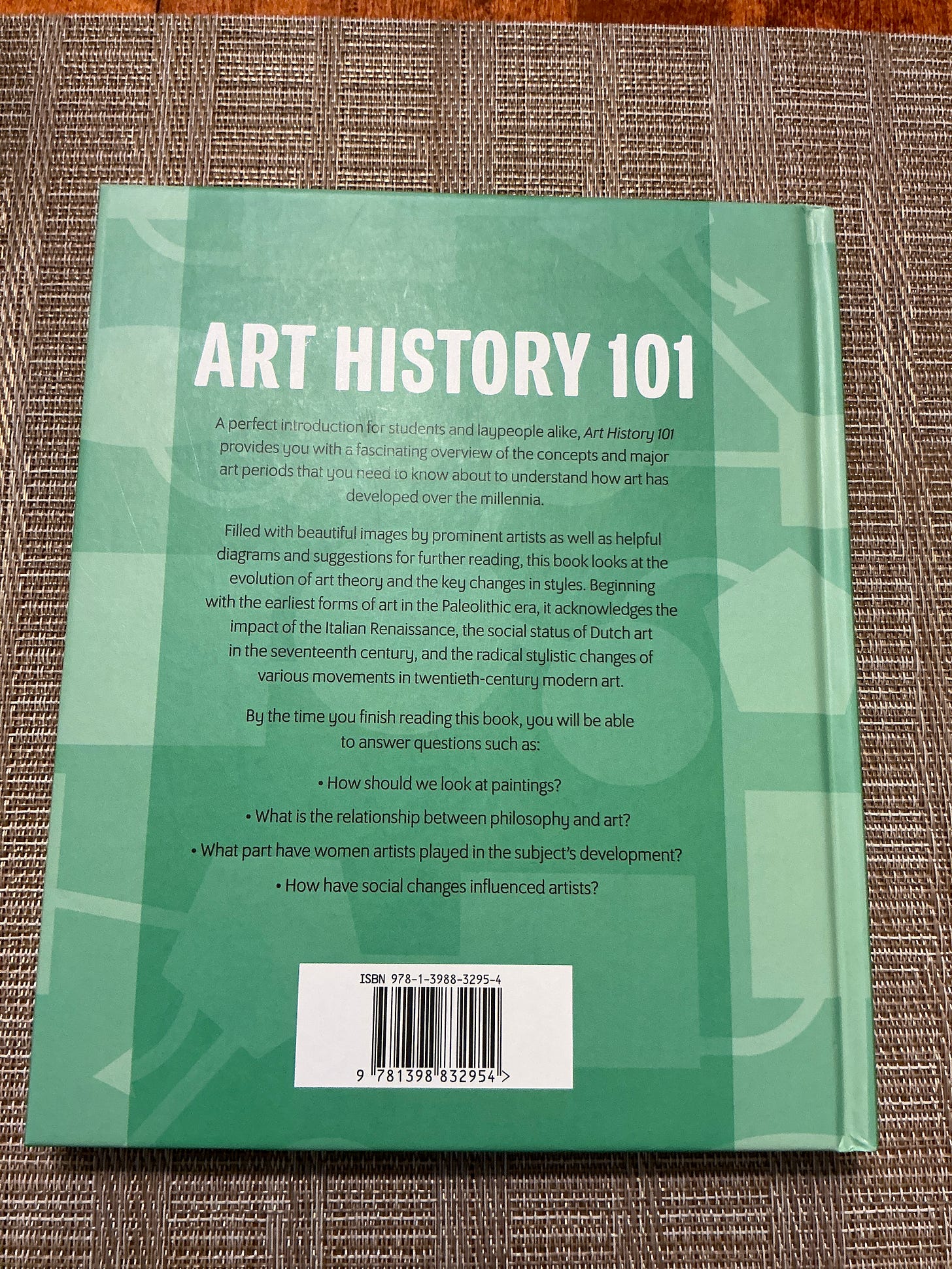Book Review: “Art History 101: The Essential Guide to Understanding the Creative World” by John Finlay
If we went for a coffee today, this title is so obscure and out of the ordinary for me, we probably wouldn’t talk about it, except if I had just read it, or was currently reading it, and you asked me about it…
But, here goes!
How did I get this book?
From that purveyor of excellent and high-quality literature… Five Below.
My special-needs daughter loves Five Below. It fits her price range, close to home, it’s in the same complex as our church, and has a wide variety of items with enough change to keep her interested.
We end up spending quite a bit of time there.
I’m always interested in what they have out for their book section. It gives me a window into what their company thinks would appeal to their customer. Thus, it appears to be an amoral selection. They have a handful of titles that could be considered Christian, and a shocking amount of titles that are occultic spirituality, crystals, spirit guides, self-help and so forth. There are also some titles like this one that are genuinely helpful for health and fitness or education. It seems their customer is searching for meaning and purpose.
This title piqued my interest because I’m interested in the creative process, understanding our cultural progression better, was hoping for a better understanding of art over the last 100 years, and it was at an attractive price.
What is it about?
The author sets the stage in the introduction by discussing the whole idea of art history and the various methods and perspectives that have evolved and changed over the centuries in how we understand art. The first chapter helps the reader to confront the ideas we have about art and how we perceive it, what it’s use is, how we value it and how that’s changed over time.
The following chapters are a walk through the major periods of western art, giving terms and examples and connections to what came before.
Special emphasis is given to female artists and their contributions.
What did I think about it?
I don’t know that I understood the creative world more after reading it. I had a hard time with following the train of thought in much of the book. I got lost in the terms. It felt like this was a masters thesis or doctoral dissertation that had been reworked for public consumption.
To be fair to the author, who might be reading this, I did read it at night just before falling asleep. My brain isn’t the sharpest at that point in the day.
There’s three ideas that I have as a result of reading this:
First, I had no idea the role women had played in the development of western art. I’m grateful that this was featured, even though at times it did feel like a product of a DEI initiative.
Second, it was good to realize that the way we experience art, or appreciate art, or value art has changed over the centuries. It was good to see labels attached to that, and to listen into the discussion from the various perspectives of art history.
Third, book publishing is weird! It’s interesting to me how this book was published. The author is clearly educated, and it feels like educated recently. Five Below offers this kind of book five feet from the section full of candy. That’s intriguing to me. Where and how does Five Below buy books for their stores? I’m curious what deal was made and then how well the book has done.
Conclusion:
The best walk through of art in the west that I’ve come across was the film series by Francis Schaeffer called “How Should We Then Live?” If you’re a Christian, you should absolutely start there in attempting to gain an understanding of western art.
Five Below has offered me a window into a segment of our culture that is searching for meaning and truth and being offered “solutions” in the midst of consumerist kitsch. It feels shallow and hollowed out. Jesus was right. The fields are ripe for the harvest.





